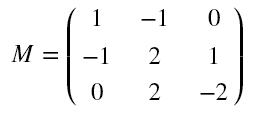TensorFlow基本操作 实现卷积和池化
之前已经提到过图像卷积的操作和意义,并且用OpenCV中的filter2D函数实现了一些例子。OpenCV中的filter2D函数仅仅是用一个卷积核去卷积单个的图像矩阵,而在TensorFlow中,卷积操作主要用于CNN中的卷积层,所以输入不再仅仅局限与三维或一维的矩阵,卷积核的个数不再是单个,输出的通道数=卷积核的个数,为此TensorFlow提供了tf.nn.conv2d函数实现了一个卷积层的卷积操作。定义如下:
def conv2d(input,
filter,
strides,
padding,
use_cudnn_on_gpu=None,
data_format=None,
name=None)其中参数分别为:
第一个参数为当前层的矩阵,在卷积神经网络中它是一个四维的矩阵,即[batch,image.size.height,image.size.width,depth];
第二个参数为卷积核(滤波器),由tf.get_variable函数创建得到;
第三个参数为不同维度上的步长,其实对应的是第一个参数,虽然它也是四维的,但是第一维和第四维的数一定为1,因为我们不能间隔的选择batch和depth;
第四个参数为边界填充方法。
tf.get_variable函数用以创建卷积核和偏置的权重变量,其结果一般作为tf.nn.conv2d和tf.nn.bias_add函数的输入,函数定义如下:
def get_variable(name,
shape=None,
dtype=None,
initializer=None,
regularizer=None,
trainable=True,
collections=None,
caching_device=None,
partitioner=None,
validate_shape=True,
use_resource=None,
custom_getter=None)需要说明的是,其第二个参数表示卷积核的维度,也是一个四维的矩阵,[filter.size,filter.size,depth,num],前三个参数定义了单个卷积核的尺寸,其中的depth应该等于需要卷积的层的depth,即[batch,image.size,image.size,depth]中的第四个参数。而num可以理解为卷积核的个数,它决定了下一层输出的通道数。
所以在CNN中的一个卷积层的卷积操作在TensorFlow中可以用5行代码来实现——定义卷积核,定义偏置,卷积操作,加入偏置,ReLu激活。
filter_weight = tf.get_variable(name,dtype)
biases = tf.get_variable(name,dtype)
conv = tf.nn.conv2d(input, filter_weight,strides,padding)
bias = tf.nn.bias_add(conv, biases)
actived_conv = tf.cnn.relu(bias)同样的,TensorFlow也提供了池化操作的函数,其中最大池化为tf.nn.max_pool,平均池化为tf.nn.avg_pool,拿平均池化说吧:
def avg_pool(value,
ksize,
strides,
padding,
data_format="NHWC",
name=None):这个函数和tf.nn.conv2d很像,就不逐个参数说明了,主要注意的一定是第二个参数,在tf.nn.conv2d中第二个参数是需要训练权重,而在avg_pool函数中只需要直接给出四个维度就好,这是因为池化操作的卷积核参数不需要训练得到,而是直接指定,参数是什么由是最大池化还是平均池化有关。由于池化操作一般只用来降尺寸,而不是降通道数,所以池化层的核一般选择为[1,2,2,1][1,3,3,1]。
为了更清晰的理解卷积和池化操作,在这里不直接给出网络,而是用指定的卷积核和偏置卷积操作一个指定的矩阵:
假设输入矩阵为:

指定卷积核为:

指定偏置为:
[1, 1, 1, …., 1]
import tensorflow as tf
import numpy as np
M = np.array([
[[1],[-1],[0]],
[[-1],[2],[1]],
[[0],[2],[-2]]
])
#打印输入矩阵shape
print("Matrix shape is: ",M.shape)
#卷积操作
filter_weight = tf.get_variable('weights',
[2, 2, 1, 1],
initializer = tf.constant_initializer([ [1, -1], [0, 2]]))
biases = tf.get_variable('biases',
[1],
initializer = tf.constant_initializer(1))
#调整输入矩阵的格式符合TensorFlow的要求,batch=1
M = np.asarray(M, dtype='float32')
M = M.reshape(1, 3, 3, 1)
x = tf.placeholder('float32', [1, None, None, 1])
conv = tf.nn.conv2d(x, filter_weight, strides = [1, 2, 2, 1], padding = 'SAME')
bias = tf.nn.bias_add(conv, biases)
pool = tf.nn.avg_pool(x, ksize=[1, 2, 2, 1], strides=[1, 2, 2, 1], padding='SAME')
with tf.Session() as sess:
tf.global_variables_initializer().run()
#将M feed到定义好的操作中
convoluted_M = sess.run(bias,feed_dict={x:M})
pooled_M = sess.run(pool,feed_dict={x:M})
print("convoluted_M: \n", convoluted_M)
print("pooled_M: \n", pooled_M)结果:
Matrix shape is: (3, 3, 1)
convoluted_M:
[[[[ 7.]
[ 1.]]
[[-1.]
[-1.]]]]
pooled_M:
[[[[ 0.25]
[ 0.5 ]]
[[ 1. ]
[-2. ]]]]
在IPython中的结果如上面所示,为了方便换看,把他弄成正常矩阵的形式:
convoluted_M:
[[
[[ 7.] [ 1.]]
[[-1.] [-1.]]
]]
pooled_M:
[[
[[ 0.25] [ 0.5 ]]
[[ 1. ] [-2. ]]
]]
就是上面这样了,需要注意的是,边界填充是在右侧和下方单边填充(补零),即:
(3-2+1)/2+1=2
卷积后加入偏置即为convoluted_M,平均池化后为pooled_M。